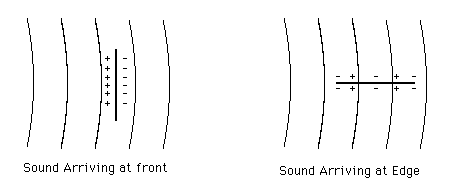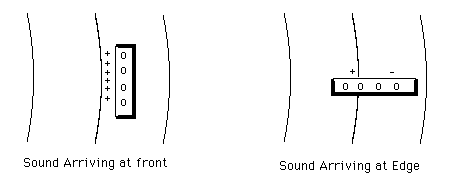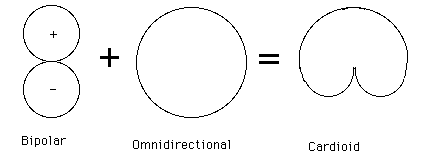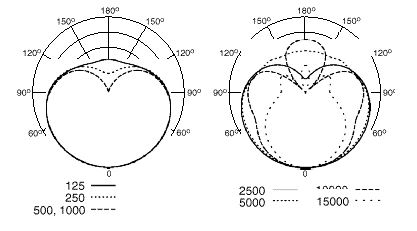
We know microphones come with various pickup patterns. What makes a microphone directional?

When a diaphragm is suspended with the front and back open to the air, it will move in response to any difference in pressure between the front and back. If a sound wave arrives from the front of the diaphragm, there will be a difference in pressure between the front and back, and the diaphragm will move. If a sound wave arrives at the edge, the pressure on the front and back will stay equal (no matter how it changes) and the diaphragm will not move. If the sound arrives from the back, the diaphragm will move again, but the other way (In relation to the sound waveform.) A diaphragm working this way is called a pressure gradient diaphragm, and the response pattern is bipolar or bidirectional:
If the back of the diaphragm were enclosed, the pressure at the back would be the average air pressure and the diaphragm would move in response to any sound:

The response pattern will be omnidirectional, at least for wavelengths greater than the size of the diaphragm.
To create a drawing of the cardioid pattern, we simply add bipolar and omni. since the back lobe of the bipolar is negative, it cancels out part of the omni pattern:

This is easy on paper, but how is it done with real microphones? A variety of systems have been used in the past, such as enclosing part of the diaphragm, or literally putting two microphones in the same case, but almost all cardioid microphones today use some form of acoustic delay. To understand how this works, think what would happen if the diaphragm were mounted at the end of a short tube:

Sound arriving from the front has to travel the extra distance Df to get to the back of the diaphragm. Sound arriving from the back gets to the back and front at nearly the same time. When you project the difference in travel time onto the graph of the waveform, you see that a larger pressure gradient is produced by sounds arriving from the front.
Of course, this effect will be most pronounced at a single frequency. This means that sound arriving from the sides will have a peculiar frequency response. Real microphones spread the directional effect across a wider range of frequency by providing many delay paths from front to back. This weakens the back rejection to about 40 dB, but gives a better overall sound. The delay paths may be made by putting slots in the side of the tube, by making complicated plates with slots and holes, or by adding acoustic foam, (usually all of these methods are combined). Here are the actual polar patterns for a recently designed microphone:

You can see that even with the current state of the art, there is variance in polar response at higher frequencies. This happens to be a large diaphragm mic. Smaller diaphragms are better behaved at high frequency, but become omnidirectional at low frequency.
pqe 10/23/98